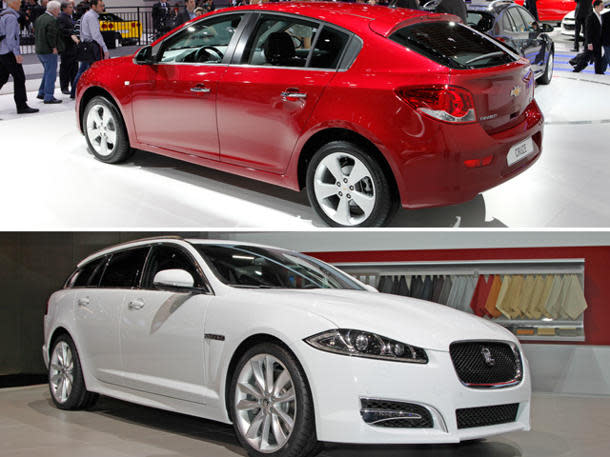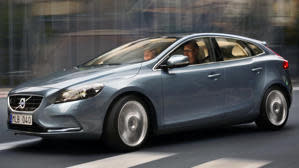 Motoramic
MotoramicThe global conspiracy to keep wagons out of Americans’ hands
Among the Geneva Motor Show's more practical reveals were a handful of handsome, efficient family movers for a variety of pocketbooks, all of which fell into the category known as "wagons," such as the Chevy Cruze wagon and Jaguar XF Sportbrake. By doing so, they're certain never to appear on these shores. Here's why Americans can't get some of the best vehicles in the world.
In the interest of full disclosure, I'm biased toward wagons. Supposedly as a toddler I rolled around a playpen set up in the back of the Pontiac Bonneville Safari wagon en route to grandma's house, and the resulting imprinted memories/light brain damage incepted my future preferences. My last two personal rides have been wagons, and I suspect the next one will be too. I'm typical of the amateur dad autowriter set, an enfeebled gang that somehow still talked General Motors into building a Cadillac CTS-V wagon that sells like Rush Limbaugh t-shirts at Barnard College alumnae day.
Depending on what you define as a wagon, there's roughly 20 models on sale in the United States that could wear the label, but only a few would truly fit the classic shape of a "station wagon." Of those, most arrive here as an afterthought, only brought over if it's easy to help fill foreign factories. Among mass-market brands, the numbers have fallen steadily; Volvo and Mazda pulled their wagons, Volkswagen has culled its ranks, and even Subaru seems more interested in the SUV market than keeping their owner's Birkenstocks happy.
Every auto executive can quote sales stats showing the precipitous decline of the vehicle that once ruled American roads, and offer a dozen reasons why it's so. Tastes change, they say; people don't want the cars their parents drove. Building a new body style for fewer buyers doesn't make financial sense -- the reason why the Cruze is sedan-only stateside -- and besides, wouldn't you rather have this stylish SUV over here?
That's all sensible, but I believe it mixes cause and effect. The discovery by American automakers in the 1980s that they could take truck frames, slap a full body on top and sell it as a massive markup made SUVs the best choice for the balance sheet, even if they weren't the best choice for buyers. Fuel economy rules only tilted the playpen further toward trucks; as long as you could fold the seats flat, had all-wheel-drive anda certain ride height, a vehicle qualified as a SUV under federal standards and had to meet the less-efficient "truck" standards. Hence the Volvo V70 wagon with all-wheel-drive counted as a car; the XC70 Cross-Country, the same vehicle with a slightly lifted suspension, was a truck.
SUVs don't cost so much less to build today than cars, but they still command higher sticker prices, because people rightly want a vehicle with a large, easy-to-access cargo spot. Most buyers don't need the extra ride height or all-wheel-drive, but automakers are loath to introduce models that may only cannibalize sales. The newest wagon-type cars that do make it here, like the Toyota Prius V or the upcoming Ford C-Max, don't compete directly with other models; both Toyota and Ford removed the useful third row of seats those models come with in foreign markets. If you want something like the third row found in Volvo wagons and the Mazda5, you have to go to a near-full-size SUV or stay home.
I'll be the first to say there's a poisonous amount of nostalgia in all of this. Even Volvo's new V40 wagon looks less like a family hauler and more like a sedan with a suspicious rise in the roof. (Sorry, it's not coming stateside either). Yet if kids don't want what their parents drive, that suggests a new class of car buyers will soon want something a little smaller, a little less blocky, but without any sacrifice in usability. Who wants to drive the same bent piece of metal everyone else has, anyways?

 Yahoo Autos
Yahoo Autos 

